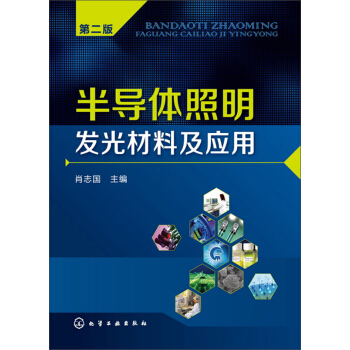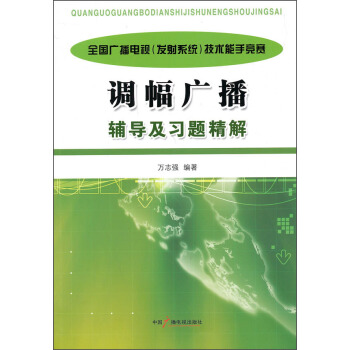![量子保密通信 [Quantum Private Communication]](https://pic.qciss.net/10336150/3afd663f-bb40-42a6-830f-a0e7de3a608b.jpg)

具體描述
內容簡介
Quantum Private Communication covers the fundamentals of the areas of secure communication, quantum cryptography, quantum communication, and their physical implementation with applications. The book appears in a timely manner for an emerging field at the crossroad of classic private communication and quantum physics.Graduate students and scientists alike in communication engineering,computer science, electronic engineering, physics and mathematics will benefit from the book.
作者簡介
Professor Guihua Zeng teaches and conducts research at the Department of Electronic Engineering of Shanghai Jiao Tong University and spent an Alexander von Humboldt Fellowship at the University of Freiburg,Germany.目錄
1 Introduction1.1 Security Requirements of Communication
1.2 Overview of Quantum Private Communication
1.3 Private Communication Models
1.3.1 Classic Secure Communication Model
1.3.2 Quantum Private Communication Model
1.4 History of Quantum Private Communication
1.5 Relationship with Other Subjects
1.6 Notations and Conventions
1.6.1 Random Variables
1.6.2 Cryptosystem and Cipher
References
2 Quantum Security Theory
2.1 Introduction
2.2 Mathematical Background
2.2.1 Hilbert Space
2.2.2 Properties of Hilbert Space
2.2.3 Operators
2.2.4 Several Important Operators
2.2.5 Matrices Decomposition
2.3 Introduction to Quantum Mechanics
2.3.1 Quantum Systems
2.3.2 Dynamic Characteristics of Quantum Systems
2.3.3 Information Retrieval of Quantum Systems
2.3.4 Fundament of Quantum Optics
2.4 Introduction to Information Theory
2.4.1 Entropy
2.4.2 Mutual Information
2.4.3 Quantum Fano Inequality
2.5 Introduction to Complexity Theory
2.5.1 Turing Machine
2.5.2 Classic Complexity
2.5.3 Quantum Complexity
2.6 Security Model
2.6.1 Information-theoretic Security
2.6.2 Computational Security
2.6.3 Attack Strategy Analysis
References
3 Quantum Bits
3.1 Classic Bits
3.2 Quantum Bit Definition
3.2.1 Binary Qubit
3.2.2 P-ary Qubit
3.2.3 Composite Qubit
3.3 Quantum Bit Transformation
3.3.1 Quantum Logic Gates
3.3.2 Quantum Circuits
3.4 Mathematical Property
3.4.1 Bloch Sphere
3.4.2 Orthogonality of Opposite Points
3.4.3 Rotations on Bloch Sphere
3.5 Physical Property
3.5.1 Superposition
3.5.2 Entanglement
3.5.3 Distinguishability
3.5.4 Quantum No-cloning
3.6 Information Property
3.6.1 Single Qubit Information
3.6.2 Nonorthogonal Qubits Information
References
4 Quantum Key Distribution
4.1 Intuition on QKD
4.2 Standard QKD Schemes
4.2.1 BB84 Protocol
4.2.2 B92 Protocol
4.3 Quantum Communication Model for QKD
4.3.1 Quantum Source
4.3.2 Quantum Channel
4.3.3 Quantum Sink
4.4 Reconciliation
4.4.1 Reconciliation Model
4.4.2 Binary Reconciliation Protocol
4.4.3 Non-Binary Reconciliation Protocol
4.5 Privacy Amplification
4.5.1 Privacy Amplification Principle
4.5.2 Privacy Amplification Techniques
4.6 Security Model for QKD
4.6.1 Security Theory
4.6.2 Typical Attack Strategies
References
5 Quantum Cryptosystem
5.1 Introduction
5.2 QKD-based Cryptosystem
5.3 Quantum Vernam Cipher
5.3.1 Classic Vernam Algorithm
5.3.2 Quantum Vernam Cipher
5.3.3 Private Quantum Channel
5.3.4 Security Model
5.4 Typical Quantum Vernam Ciphers
5.4.1 Classic-key-based Quantum Vernam Cipher
5.4.2 Bell-key-based Quantum Vernam Cipher
5.4.3 Teleportation as Quantum Vernam Cipher
5.5 Quantum Block Cipher
5.5.1 Theoretical Model
5.5.2 Quantum Block Algorithm for Binary Bits
5.6 Quantum Public Key Cryptosystem
5.7 Typical Quantum Public-key Algorithms
5.7.1 Algorithm based Subset-sum Problem
5.7.2 Algorithm based Quantum Coding
References
6 Quantum Authentication
6.1 Introduction
6.2 Authentication Theory
6.2.1 Authentication Categories
6.2.2 Security Model
6.3 Message Authentication Code
6.3.1 Encoding Approach
6.3.2 Hash Function Approach
6.4 Quantum Identity Authentication
6.4.1 Scheme Description
6.4.2 Security Analysis
6.4.3 In Imperfect Channel
6.5 Quantum Signature Principle
6.6 Arbitrated Quantum Signature
6.6.1 Algorithm Description
6.6.2 Security Analysis
6.7 True Quantum Signature
6.7.1 Algorithm Description
6.7.2 Security Analysis
……
Index
精彩書摘
This chapter devotes to building a security infrastructure for the quantum private communication. To reach this aim, some fundamental subjects including quantum mechanics, quantum information theory and quantum complexity theory are introduced. Of these fundamental subjects, the quantum mechanics is the cornerstone. With these fundamental subjects, a security theory for the quantum private communication is built.In previous chapter, an overview of the quantum private communication has been presented and a quantum private communication model has been constructed. This chapter investigates the security theory for the quantum private communication. For convenience, this kind of security theory is called a quantum security theory in this book. As usual, both the information theoretic security and computational security which is very useful in practical applications are contained in the quantum security theory. Different from the scenarios in the classic private communication, however, the information- theoretic security and computational security are here based on the quantum information theory and quantum complexity theory, respectively. To construct the quantum security theory, three aspects are involved including the information theory, complexity theory, and security model. The information theory contains both the Shannon information theory and quantum information theory. The complexity theory is associated with the classic complexity and quantum complexity theory which is based on the quantum Turing machine (TM). And the security model is a general description for the quantum security theory based on the information theory and complexity theory. Before describing in detail the quantum security theory, some fundamentals including the mathematical backgrounds and quantum mechanics are described. They are actually the cornerstones of the quantum security theory.
前言/序言
Since Wiesner first found that quantum laws may be applied for protecting legitimate information in 1969, the quantum cryptology——a combination of the quantum physics and classic cryptology——has attracted much attention since then. With further investigations, the infrastructure of the quantum cryptology has become more and more clear. To conclude these research results, some excellent books have been devoted to describe various aspects of the quantum cryptology, such as the Quantum computation and quantum information by Nielsen and Chuang, Quantum cryptography and secret-key distillation using quantum cryptography by Assche, and Quantum cryptology by Zeng. As a main application direction of the quantum cryptology, the quantum private communication which combines the quantum cryptology and communication techniques has recently made great progress. By far, various investigations on this aspect have been presented, even some techniques have been applied in practices. This means that the quantum private communication has entered gradually the commerce field. This book devotes to describe fundamental principles, typical schemes, and technical implementations for the quantum private communication.Because the quantum private communication has currently become a practical reality with products available commercially, it is important to focus not only on the theoretical topics but also on the practical issues. Accordingly, this book arranges the contents from pure theoretical descriptions to practical applications. To reach this aim, a broad range of materials are covered in this book, including how to protect confidentiality and authentication of the private communication using quantum tools and typical techniques for practical applications of quantum private communication in fiber telecommunication systems, wireless optical communication (including satellite communication), IP networks, and mobile communication systems, etc. Consider that cryptology, quantum physics, and information theory are necessary ingredients to
build framework of the quantum private communication, brief introduction on these issues is employed to make the book self-consistent.
This book originated out of a graduate course of lectures in Quantum Secure Communication given at the Shanghai Jiaotong University. The con- tent of this book is based on my investigations on the quantum cryptography as well as the quantum private communication since 1997.
用戶評價
這本書的書名《量子保密通信》讓我立刻聯想到的是科幻小說裏那種“無懈可擊”的安全傳輸方式。我一直覺得,信息安全就像一場永無止境的貓鼠遊戲,每一次技術的突破都伴隨著新的威脅齣現。而“量子”這個詞,似乎暗示著一種更高維度的解決方案,一種能夠從根本上解決安全問題的力量。我非常好奇,它所說的“保密”究竟能達到什麼樣的程度?是理論上的絕對安全,還是在實際操作中能夠達到比現有技術高得多的安全性?我希望書中能夠解釋量子通信在麵對各種攻擊(例如竊聽、重放攻擊)時,其獨特的防禦機製是什麼。我尤其想知道,它是否能夠為我們提供一種“後量子密碼學”的視角,即如何在量子計算機齣現後,仍然能夠保持信息的安全。這本書是否會探討量子通信在不同應用場景下的可行性,比如軍事通信、金融數據傳輸,甚至是個人隱私保護?我很期待它能給我帶來一些關於未來信息安全格局的啓示。
评分在我看來,《量子保密通信》這個書名本身就充滿瞭未來感和神秘感。我一直以來都對信息安全領域的發展有著濃厚的興趣,尤其是那些能夠顛覆現有格局的革命性技術。我非常好奇,這本書將如何解釋量子力學的原理是如何被應用到通信安全中的。例如,它是否會深入探討量子疊加和量子糾纏這兩個核心概念,並說明它們如何為通信提供前所未有的安全性?我希望書中能夠用一種嚴謹又不失趣味的方式來闡述這些復雜的物理學原理,並且能夠將其與實際的通信協議和技術聯係起來。我特彆期待書中能夠介紹一些具體的量子保密通信協議,比如BB84協議,並分析其工作原理和優勢。此外,我也想知道,量子保密通信在實際應用中會麵臨哪些挑戰,比如技術成熟度、成本以及部署難度等等。這本書是否能夠給我一個關於量子保密通信發展現狀和未來前景的全麵瞭解?我渴望通過閱讀這本書,能夠更清晰地認識到這一前沿技術對我們未來社會可能帶來的深遠影響。
评分我最近在尋找一些能夠拓展我技術視野的書籍,而《量子保密通信》這個名字恰好抓住瞭我的眼球。我本身就對密碼學有著濃厚的興趣,對現有的公鑰加密、私鑰加密等技術原理有一定的瞭解。因此,我特彆好奇量子保密通信究竟是如何顛覆或補充現有加密體係的。它是否意味著我們現有的許多加密算法將麵臨被破解的風險,或者它將提供一種完全不同於現有範式的安全保障?書中會不會詳細介紹量子密鑰分發(QKD)的各種實現方式,例如基於光子、光縴的原理,以及它們在實際部署中可能遇到的挑戰和解決方案?我希望作者能夠用一種清晰易懂的方式來闡述那些聽起來非常高深的物理學概念,避免過於晦澀的數學公式,讓我這個非物理專業背景的讀者也能有所收獲。更重要的是,我希望這本書能夠讓我對量子保密通信的未來發展趨勢有一個初步的認識,它是否已經進入瞭商業化階段,或者仍處於實驗室研究階段?對於一個對技術發展保持高度敏感的人來說,這些信息都至關重要。
评分老實說,我並不是一個在物理學領域有深厚造詣的人,但是“量子保密通信”這個書名,卻像一塊磁鐵一樣吸引瞭我。我之所以會被吸引,是因為它聽起來像是科技界最前沿的探索,是人類智慧在理解和運用自然規律上的又一次飛躍。我好奇,這本書會如何將那些深奧的量子物理原理,比如量子疊加和量子糾纏,轉化為實際的通信技術?我希望它能夠用一種相對容易理解的方式來闡述,避免過多的專業術語和復雜的數學推導,讓我這個普通讀者也能窺探到其中的奧秘。我更關心的是,這種“量子保密通信”究竟能為我們帶來什麼樣的好處?它是否能夠徹底解決我們現在麵臨的許多網絡安全問題,例如數據泄露、身份盜竊?我希望這本書能夠給我描繪一個清晰的圖景,讓我們看到量子保密通信在未來可能扮演的角色,以及它將如何改變我們的生活。我期待著通過這本書,能夠對這個新興領域有一個初步但深刻的認識。
评分這本《量子保密通信》的書名一聽就很有吸引力,我一直對信息安全領域的前沿技術很感興趣,特彆是那些聽起來充滿瞭未來感的概念。量子保密通信,光是這個名字就讓我想象到無數科幻電影裏的場景,簡直是現實版的“不可能的任務”。我好奇它究竟是如何利用量子力學的奇特性質來保證通信的絕對安全,是像傳說中那樣,任何竊聽都會被立刻察覺,還是有更深層次的原理支撐。我非常期待書中能夠深入淺齣地解釋量子疊加、量子糾纏這些聽起來玄之又玄的概念,並且能夠將其與實際的通信過程聯係起來。我希望它不僅僅是理論的堆砌,而是能夠提供一些關於實際應用場景的描繪,比如它將如何影響未來的金融交易、國傢安全,甚至是我們的日常生活。我甚至幻想書中會提到一些尚未公開的,正在研發中的量子通信技術,那樣的話,這本書的價值就更不可估量瞭。我準備好迎接一場智力上的冒險,去探索這個令人著迷的全新領域,看看它是否真的能為我們揭示一個更加安全可靠的通信未來。
評分好…………………………………
評分有點用很好不錯
評分書非常不錯
評分數質量不錯,對研究很有幫助
評分數質量不錯,對研究很有幫助
評分好書
評分數質量不錯,對研究很有幫助
評分不錯,是正版。但是英文的,費勁
評分這本書內容還不錯,值得看看。
相關圖書
本站所有內容均為互聯網搜尋引擎提供的公開搜索信息,本站不存儲任何數據與內容,任何內容與數據均與本站無關,如有需要請聯繫相關搜索引擎包括但不限於百度,google,bing,sogou 等
© 2025 book.qciss.net All Rights Reserved. 圖書大百科 版權所有






![材料科學與工程著作係列:微觀組織的分析電子顯微學錶徵(英文版) [HEP Series in Materials Science and Engineering:Characterization of Microstructures by Analytical Electron Microscopy(AEM)] pdf epub mobi 电子书 下载](https://pic.qciss.net/10903780/565524f9N3c15688b.jpg)







![國防科技著作精品譯叢·雷達電子戰係列:天綫係統及其在電子戰係統中的應用 [Antenna Systems and Electronic Warfare Applications] pdf epub mobi 电子书 下载](https://pic.qciss.net/11450209/rBEhU1NoMWIIAAAAAAMTtm-2WFcAAM5wQP2rkMAAxPO470.jpg)





![國外電子與通信教材係列:數字設計與Verilog實現(第五版) [Digital Design: With an Introduction to the Verilog HDL, Fifth Edition] pdf epub mobi 电子书 下载](https://pic.qciss.net/11622780/54c22fd2N7c73c93a.jpg)